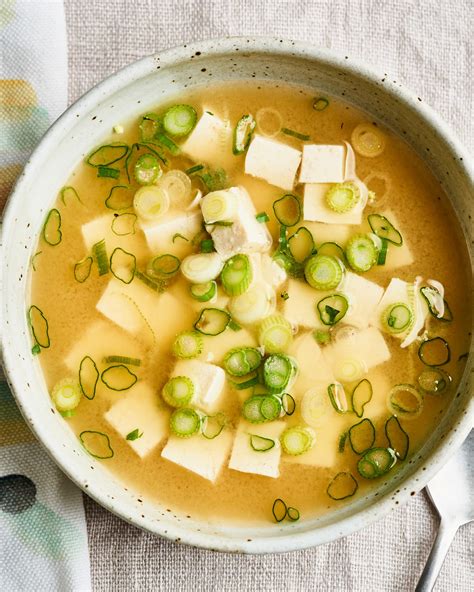Miso Soup Recipes: A Flavorful Journey into Japanese Cuisine
Miso soup, a cornerstone of Japanese cuisine, is more than just a simple broth; it's a culinary experience. Its savory depth, umami richness, and versatility make it a perfect starter, a light meal, or a comforting end to a long day. This guide delves into the art of crafting delicious miso soup, covering different varieties, ingredient choices, and tips for achieving that perfect balance of flavors.
Understanding the Fundamentals of Miso Soup
Before diving into specific recipes, let's establish a strong foundation. Miso soup's core components are:
- Dashi: This is the flavorful base, traditionally made from kombu (kelp) and bonito flakes (katsuobushi). Vegetable dashi offers a vegetarian alternative using kombu and mushrooms.
- Miso Paste: This fermented soybean paste is the heart and soul of the soup, offering a unique umami taste. There are various types, including white (shiro), yellow (awase), and red (aka) miso, each imparting a different flavor profile. White miso is milder, while red miso is more robust.
- Tofu: Silken or firm tofu adds a creamy texture and protein boost.
- Wakame Seaweed: This adds a delightful salty and slightly chewy texture. Other greens like spinach or scallions can also be incorporated.
These core ingredients can be creatively enhanced with an array of additions.
Simple Miso Soup Recipe (Classic Version)
This recipe showcases the fundamental flavors of miso soup.
Ingredients:
- 4 cups dashi
- 2 tablespoons white miso paste
- 1/2 block silken tofu, cubed
- 1/4 cup wakame seaweed, rehydrated
Instructions:
- Gently heat the dashi in a saucepan. Do not boil. Boiling can destroy the delicate flavors of the dashi and miso.
- In a small bowl, whisk a small amount of the hot dashi into the miso paste until smooth. This prevents the miso from clumping.
- Gradually whisk the miso mixture into the remaining dashi in the saucepan.
- Add the tofu and wakame seaweed. Simmer gently for a few minutes, allowing the flavors to meld.
- Serve immediately.
Elevated Miso Soup Recipes: Exploring Variations
Once you've mastered the basics, experiment with different ingredients to create unique and exciting flavor combinations:
Miso Soup with Mushrooms and Shiitake
Adding earthy mushrooms, like shiitake, elevates the umami profile. Sauté the mushrooms lightly before adding them to the soup.
Miso Soup with Spinach and Scallions
Spinach and scallions add a fresh, vibrant touch. Add them towards the end of cooking to maintain their vibrant green color.
Miso Soup with Chicken or Seafood
For a heartier soup, incorporate cooked chicken or seafood, like shrimp or salmon.
Tips for the Perfect Miso Soup
- Use fresh ingredients: The quality of your ingredients significantly impacts the final taste.
- Don't boil the soup: High heat can destroy the delicate flavors of the miso and dashi.
- Whisk the miso paste: This prevents clumping and ensures a smooth, flavorful soup.
- Adjust the miso quantity to your taste: Start with a smaller amount and add more if needed.
- Get creative with additions: Experiment with different vegetables, proteins, and spices to create your signature miso soup.
Conclusion: Embrace the Versatility of Miso Soup
Miso soup is a culinary canvas. With its simple base and endless possibilities for customization, it's a recipe that can be enjoyed daily, each time offering a unique and delicious experience. So, gather your ingredients, embrace the process, and embark on your own flavorful journey into the world of miso soup!
